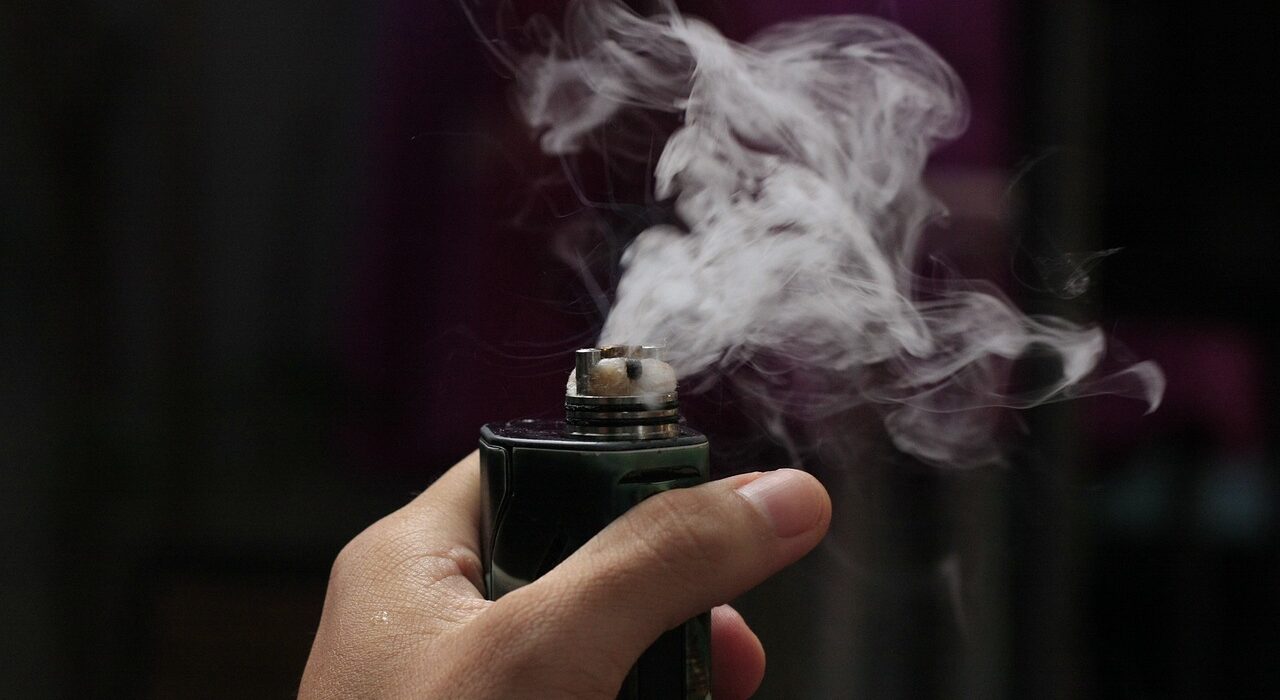Interesting facts about vaping and its effects on the lungs

In a world driven by the promise of safer alternatives to traditional smoking, and vaping, a surprising question appears on the horizon: What are the interesting facts about vaping and its effects on the lungs? its effects are much on the lungs so it is very harmful to the lungs.
When you suck away from the smooth electronic cigarette, taste the seductive taste and billowing clouds, invisible forces play a role in your respiratory system, silently choreographing the dance of destruction.
But what exactly is this interesting fact that casts a shadow over the growing vaping industry? Prepare to be fascinated, because recent research has discovered a disturbing fact: vaping may not be the benign habit that many people trumpet.
Far from it, studies have shown that the atomized particles emitted by e-cigarettes can cause serious damage to the delicate alveoli of the lungs, cause inflammation and impair respiratory function.
This article delves into interesting facts about vaping and its effects on the lungs.
Is vaping the best way to quit smoking?
Vaping may be less harmful than smoking, but it is not the best way to quit smoking.
The report of the American Surgeon General on smoking cessation concluded that “the evidence is insufficient to infer that e-cigarettes in general increase smoking cessation” 36.
The opinion of the European Union Scientific Committee on Health, Environment and Emerging Risks (SCHEER) on e-cigarettes concluded that “there is a lack of robust longitudinal data on the effects of e-cigarettes on smoking cessation. Until such research is available, e-cigarettes should only be considered to support smoking cessation for a limited period of time and under supervision”
In addition, studies have shown that in some cases, vaping may hinder smoking cessation in some people by prolonging or increasing addiction to nicotine. 38
The World Health Organization says that “vaping cannot be recommended as a smoking cessation aid”, but recommends the use of randomized controlled trials to enable smokers to completely quit smoking.
Is steam harmful to your heart and lungs?
The American Lung Association says that inhalation of harmful chemicals from vaping can cause irreversible lung damage and lung disease.
Vaping liquid contains more than 80 chemicals, including nicotine, cancer-causing chemicals, and toxic heavy metals such as nickel, tin, and lead7, all of which are associated with the development of lung diseases.
When heated, the evaporated liquid will produce ultrafine particles and volatile organic compounds. These may exacerbate diseases such as asthma and emphysema and may cause heart attacks.
Popcorn lung-A chemical substance called diacetyl. Although it is banned in juices all over the world in the United Kingdom and the European Union, including in the United States and Canada, it is used to make buttery flavors such as popcorn, custard, and sweet desserts. Flavor. High levels of exposure to diacetyl can lead to severe lung disease bronchiolitis obliterans also known as popcorn lung
What happens when you vape an electronic cigarette?
An electronic cigarette or atomizing device is an electronic product that heats a liquid or wax to produce the smoke you inhale and is created as a nicotine delivery system, just like a cigarette.
They come in a variety of shapes and sizes, from looking like cigarettes, to USB flash drives (JUUL), to large storage tank system equipment.
Atomized liquids or waxes contain an average of 80 different chemicals, most of which include nicotine and tetrahydrocannabinol (THC), but many also include cannabis, cannabidiol and other drugs.
Other chemicals commonly used include vitamin e acetate5 as a thinner or thickener in vaping products, diacetyl7 (banned in the UK and the European Union) and acetylpropionyl as a sweet flavoring agent in many vape liquids, propylene glycol
What happens when the evaporated liquid is heated?
When the evaporated liquid is heated, volatile compounds are created, as well as some carcinogenic toxins, such as acetaldehyde, benzene, cadmium, formaldehyde, isoprene, lead, nickel, nicotine, N-nitrosinonicotin, toluene 2, 910 and formaldehyde 6.
In addition, heating can add heavy metals such as nickel, tin, lead, aluminum, manganese, molybdenum and cobalt to the steam from the heating mechanism 3,18.
Therefore, vape aerosols include all of the above as well as ultrafine particles.
Then, when they inhale, the vaper inhales all these chemicals and elements into the lungs.
How does vaping affect your lungs?
Steam involves inhaling many chemicals and elements found in vapor liquids or waxes, or is produced when vapor liquids are heated.
In January 2018, the National Academy of Sciences, Engineering, and Medicine released a consensus research report that reviewed more than 800 different studies and concluded that vaping can cause health risks.
The American Lung Association also stated that inhalation of harmful chemicals from vaping can cause irreversible lung damage and lung disease. .
What is the disease caused by Vaping
The following are the effects of these diseases caused by vaping
- Long-term injuries related to the use of e-cigarette products (EVALUI)
- Vapor-related lung injury (VAPI)
- Death due to inability to BREATHE (EVOLI)
- Bronchiolitis obliterans is also known as “popcorn lung”
- Long-term scarring of the lungs
- Respiratory distress and disease 7
- Asthma
- Heart attack
- Damage to the liver, kidneys and nervous system 14
- Eye, nose and throat irritation
- Headache and nausea
What Popcorn lung which is also called “bronchiolitis obliterans”?
This is a disease that damages the small airway of the lungs, causing coughing and shortness of breath. It can also cause chest pain.
This condition can cause lasting damage to the lungs.
This is its common name because it was discovered when a popcorn factory worker fell ill. The reason is a chemical called diacetyl, which is added to give butter a taste.
Diacetyl is banned in the UK and the European Union, but it is still added to vape juices worldwide (including in the United States) to provide buttery flavors such as popcorn, custard and dessert flavors.
What are the long-term injuries associated with the use of vaping?
Long-term injury associated with the use of electronic cigarette vaping products, also known as Vaping-related lung injury (VAPI), is an acute or subacute respiratory disease that causes damage to the lungs and may be serious and life-threatening.
As of February 18, 2020, there were nearly 3,000 HOSPITALIZATIONS or DEATHS due to EVOLI in the United States, most of which were UNDER the AGE of 35. The age range is not surprising, because among us, the largest group of vapers is young people.
The vast majority of patients (95%) have cough, chest pain and shortness of breath. Other symptoms include fever, chills and weight loss (85% of patients), abdominal pain, nausea, vomiting and diarrhea (77% of patients). These may be the initial symptoms before severe breathing and lung problems that require oxygen are noticed. The severity of symptoms usually progresses within one to two weeks
Studies have shown that all patients have vitamin E acetate in their lungs, and many patients have THC in their lungs, which are considered to be part of the cause..
What are the chemicals in the atomized liquid and their effects on the lungs?
The following are the chemicals in the evaporated liquid and their effects on the lungs
- Vitamin e acetate: It is a toxin of concern to the Centers for Disease Control and Prevention (CDC). Because it can stay in the lungs for a long time, it can cause lung complications. This may be the cause of long-term injury (EVALUI) associated with the USE of E-cigarette products, because all cases of EVALUI have THIS CONDITION in their LUNGS 19
- THCT: He may be the reason for EVOLI
- Diacetyl: Exposure to diacetyl levels can lead to severe lung disease bronchiolitis obliterans also known as “popcorn lungs”
- Acetylpropionyl: causes respiratory distress and disease
- Formaldehyde: Known to cause lung disease and cause heart disease
- Propylene glycol: It is known to irritate the lungs and eyes, and may cause problems in patients with asthma and emphysema. Can develop into asthma in the long term
- Volatile compounds: cause eye, nose and throat irritation, headache and nausea, and can damage the liver, kidneys and nervous system
- Heavy metals: These are known to cause respiratory distress and disease. Metal-induced pulmonary toxicity can lead to long-term scarring of the lungs
- Ultrafine particles: These particles can be inhaled deep into the lungs, may exacerbate diseases such as asthma and emphysema, and may cause heart attacks
Can your lungs heal after evaporation?
If you have vaped and/or smoked for a long time, you may worry that it will be difficult to quit smoking–and also question whether you will get any health benefits, so is it worth quitting? The good news is that the human body is an amazing creation that begins to heal less than 20 minutes after the last cigarette or vape.
After a day, the lungs will be cleaned to remove the garbage left by steam and cigarettes. Sometimes this manifests as a cough-but don’t worry-it’s part of your body’s self-healing and getting rid of the garbage accumulated in your lungs.
Between 2 weeks and 3 months after quitting smoking, lung capacity and performance will regrow. According to the American Heart Association, intense activities such as running can be performed, as well as for heavy vapers.









